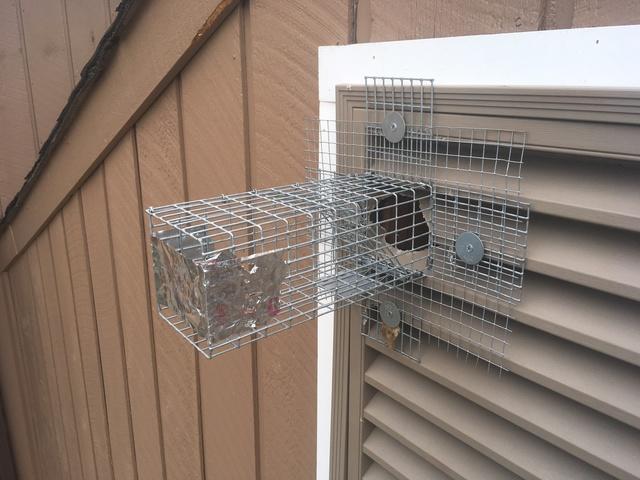Photo Album: Squirrel control & removal from Imlaystown home
In early March, I was sent to a residence in Brick to deal with a squirrel infestation. During this time of year, spring is right around the corner. Although March can throw us some curveballs with the weather, invariably, temperatures will start to warm, flowers will bloom, and leaves will start to spout on trees.
While humans appreciate the warmer temperatures and more daylight, for wildlife, these changes are absolutely essential for their survival as a species. The transition to spring has major effects on animal behavior. This is their busy season for getting back to work, and producing their next generation. Wildlife don’t have much more on their “to do list” other than foraging for food and breeding.
Older female grey squirrels usually breed once or twice a year depending on the availability of food. Squirrels are single-parent households. When a female squirrel becomes receptive, which lasts less than a day, her scent will attract the males. The most dominant one gets to go first, and then other males take their turns. Afterwards, the males then depart and have nothing else to do with the female or the young. The mother squirrel will have a litter of three or four babies after about a 45-day gestation period. Many of the squirrels you see running around now are carrying little ones!
Right now, those mother squirrels are looking for a safe place to give birth. They will search for a place that will offer protection, warmth, and security. Outdoors, the mothers give birth and care for their young in a drey, a nest made out of twigs, built in the forks of tall trees or in a cavity nest in a hollow tree. Outdoors, the vulnerable young are at the risk of predator and mother squirrels often investigate birthing spots inside structures. And what better place is there than YOUR attic?! It’s a prime location that’s dry, quiet, and isolated. Mother squirrels will start probing around your home looking for any vulnerable areas to gain access.


